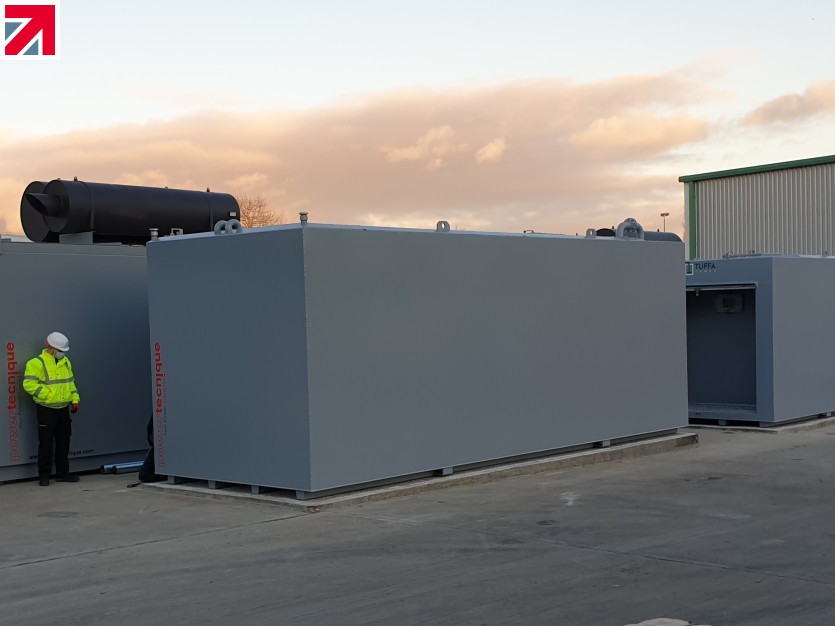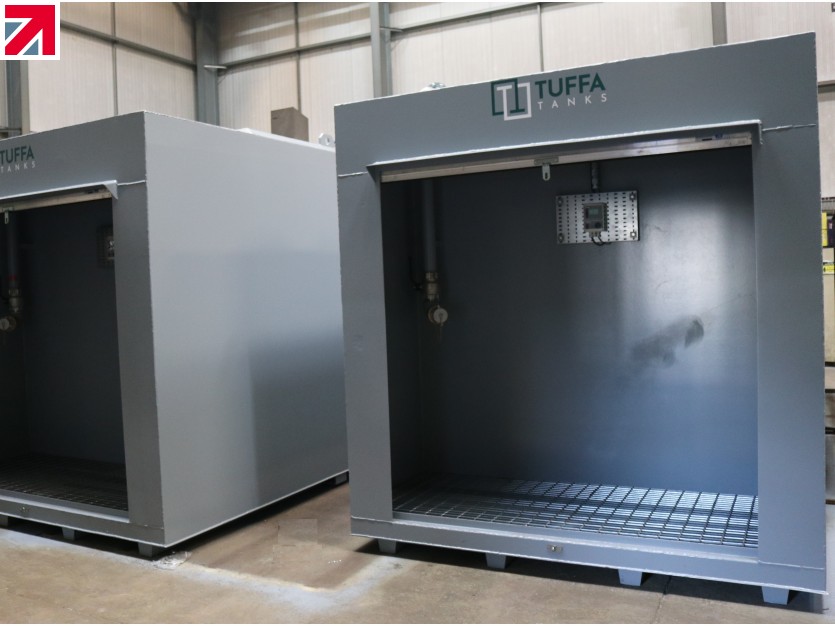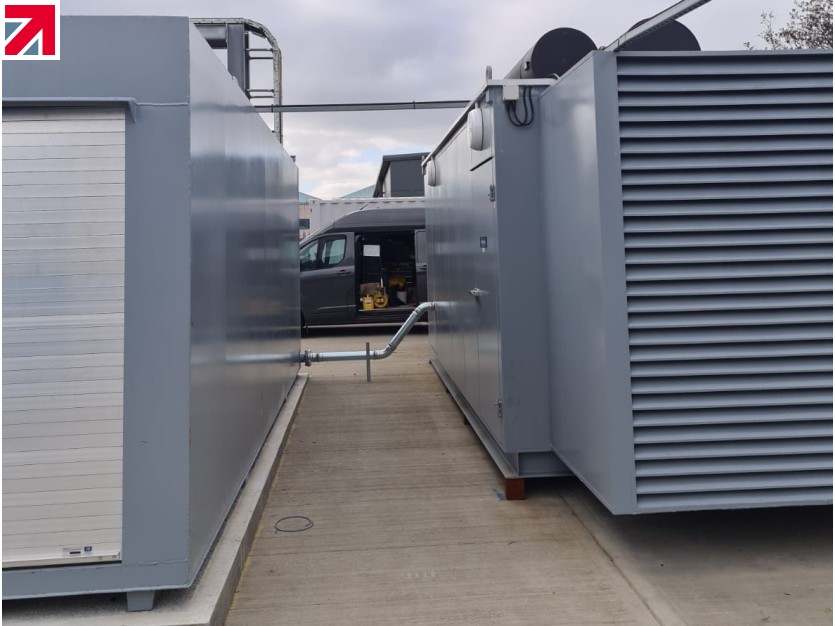During September 2020 Covid-19 cases were starting to peak, going from 1,295 new cases per day on September 1st to 7,108 on September 30th and reaching a height of 55,761 on January 15th, 2021. At the heart of the UK’s efforts to stop the spread of the virus was the rapid construction of “mega” testing laboratories known as Lighthouse labs. The name ‘Lighthouse labs’ derives from the fluorescent lights used to detect COVID-19 from swabs taken at home or in test sites. These testing facilities were strategically located around the country to provide fast results and limit the spread of the virus.
Powertecnique are a British critical power specialists and installers of Uninterruptible Power Supply systems (UPS) and diesel generator sets for power critical applications. At the end of September 2020, they were awarded a contract covering the installation of backup power generators at the construction site for a Northern Lighthouse lab. With the capability to process over 80,000 per day, emergency power to the giant buildings was key to maintain the validity of the tests housed in the laboratories and deliver test results with no disruptions. Continuous power was also critical for the safety of the scientists. Lighthouse labs are essentially warehouses full of biosafety cabinets that need power to maintain the negative air pressures which ensure hazardous airborne substances do not harm the laboratory operators.
Chris Hopkinson, Senior Project Manager at Powertecnique, was responsible for the installation. He was tasked with installing two emergency generators each rated at 800kVA for a 200-hour period. With these metrics Chris calculated the site would need two 30,000 litre diesel storage tanks to supply the generators. In the event of power loss to the site the ‘primary’ generator would provide power for over a week while mains power is restored. The ‘secondary’ generator provides redundancy for a further 200-hour period should the ‘primary’ set fail.
Getting the Lighthouse lab operational as soon as possible was of primary importance to the entire construction. Chris received the ‘go-ahead’ to install the emergency generators on 24th September and immediately commenced site-specific design work to configure the layout required for the generators, UPS systems and fuel storage tanks. A few days later Chris contacted Tuffa Tanks with the design specifications. As a simple generator tank which didn’t deviate far from our standard 31,000 steel bunded diesel tank it was a straightforward build for Tuffa’s steel fabricators. The primary tank and bund were manufactured in a thick 6mm mild steel with a 1-meter walk-in cabinet with C2020 contents gauge and bund alarm. By choosing Staffordshire-based Tuffa Tanks to manufacture the storage tanks for the diesel generators, Chris could ensure that the delivery times met the strict criteria of the project programme and be assured that the tank was manufactured to British Standards.
However, shortly after we received the order from Powertecnique we encountered unavoidable issues which required immediate action to ensure we were able to meet the agreed delivery date. With COVID-19 cases surging we had to maintain separation distances in the steel shop which meant running smaller welding teams working staggered shifts, night shifts and overtime to complete our tank orders. Simultaneously, sourcing steel was challenging due to the demand for steel in the European market outweighing the supply. Knowing the genuine urgency for Chris to complete the installation, the whole Tuffa team pulled together, and the two large steel tanks were delivered as promised on December 2nd.
By this time the Powertecnique team had been on the site for a few weeks already, working in teams of three to four engineers to install the generators and UPS. By December 10th the tanks too were fully installed and connected to the generators, completing the Lighthouse lab project, and providing vital backup power. The entire build of the enormous laboratory had taken just 11 weeks. We caught up with Chris Hopkinson to see how the project went:
“The scale of the site and the speed in which it was assembled was absolutely phenomenal. Each time I visited I could barely recognise the site as there was so much progress being made. Usually, on projects of this nature, the build times are inevitably delayed, and individual contractors are looking to negotiate more time to complete their disciplines. The vibe here was completely different and it was a real collaborative effort for a common cause. If someone had told me beforehand, they wanted the same thing delivered within 11 weeks, I’d say it would simply not be possible”
The tanks were high-quality and heavy-duty with very little flex when we were siting them. To be honest, the customer and I were just super-relieved to receive them on time to get the project completed on schedule.
Shortly after Powertecnique’s job was completed, Chris received a completion plaque from the NHS with statistics that help to highlight the scale of the job. These stats include: 150,611 construction hours, 59.728m of electrical cabling, 3,583m of pipework, 4,313m of galvanized steel, 1,127m of ventilation ductwork, 6,270m2 vinyl flooring and 16,120 ceiling tiles.
The Lighthouse lab is still in operation and with COVID cases once again on the rise, our diesel generator tanks will be on standby ready to provide backup power as a small but ‘well-oiled’ cog used to assist the NHS Test & Trace efforts.
Find out more about Tuffa Tanks on their member profile page here
Member-created content 4 years ago | From members


